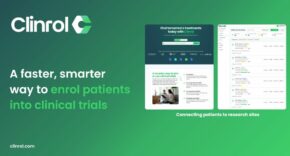
Digital transformation isn’t a fanciful hope for the NHS anymore. The Fit for the Future 10-Year Health Plan sets out a major change from hospital-centred to community care and prevention ahead of treatment, with real-time access to online services central to this shift.
However, while digitisation across the NHS is enabling new clinical information to be captured within electronic patient record (EPR) systems, many trusts still face a significant backlog of paper files. These legacy records pose compliance risks, hinder efficient care delivery and take up valuable space. Without integrating the information contained in these paper records, the full potential of EPR systems remains unrealised.
Although 94% of acute trusts in England have adopted EPRs and are experiencing improvements in clinical and administrative efficiency, many remain unsure how to digitise their legacy records. There are widespread concerns that doing so could be disruptive to care delivery and administrative workflows, as well as expensive.
This slow progress risks putting individual trusts out of step with NHS policy. The NHS’s £2bn Frontline Digitisation programme is pushing for complete adoption of electronic patient records (EPRs) across both acute and mental health trusts by March 2026. At the same time, the NHS Green Plan’s goal of achieving paper-light operations by 2026 adds further pressure on those still dependent on physical records.
While securely storing and providing clinicians with easy access to patient data via EPRs represents a major leap in efficiency, it only begins to address the deeper paper-based challenges that continue to affect trusts nationwide.
Digitisation is the way forward
There are no practical alternatives to digitisation. Paper records, whether accumulated over years or still used in day-to-day care, have become harder to track. The difficulty of determining the exact location of individual case notes can mean clinicians are unable to access complete patient information during appointments and when making important care-related decisions.
The use of physical records also slows down the transfer of notes between hospitals and doctors, delaying continuity of care and increasing the risk of missed or incomplete information reaching the right people at the right time.
In addition, boxes of paper records occupy vast amounts of space. Once storage rooms are full, files are often kept in corridors, creating fire safety hazards and data protection risks. These areas could be far better utilised to support staff and patient needs. By digitising paper notes, trusts can reclaim valuable space, transforming it into staff break rooms to boost wellbeing and reduce burnout, or converting it into extra consultation and patient areas to enhance care delivery.
How to achieve patient record digitisation at scale
With significant numbers of paper records being accumulated in trusts, the solution to eradicating them is a structured, end-to-end process. Trusts can engage partners with the right experience and accreditations to start a proof-of-concept as a first step. This is a low-risk way of demonstrating that a digitisation programme can operate without endangering patient safety or operational efficiency.
Files can be scanned at an external site, with the incorporation of digital tracking to ensure that trusts know exactly where sensitive patient information is at all times. The files are then seamlessly integrated into the trust’s existing EPR system. With an audit trail and quality assurance checks throughout the process, sensitive data remains secure.
The advantages of digitisation in-house
Trusts can also be empowered by an in-house facility that enables them to digitise all of their historical paper records and any new ones generated. New physical records can be made available in the EPR within days of a patient being discharged.
Driven by artificial intelligent (AI) and machine learning (ML) technologies, automatically catalogued and searchable records enable clinicians to quickly access medical histories, previous treatments, medical device information and other patient data, leading to safer clinical decision-making and enhanced patient safety.
The scanning process can be made more efficient with the integration of custom application programming interfaces (APIs) and offline ML document classification software. This process automatically classifies digital images directly into the right clinical section of an individual patient record, with predefined naming conventions ensuring consistency and accuracy. Offline capabilities mean that trusts don’t need to rely on a web-based AI service for processing.
In a matter of seconds, individual patient records are available to clinicians, saving time and improving medical process accuracy. This reduces the administrative workload for under-pressure staff and improves patient satisfaction at the same time.
Achieving efficiency, innovation and sustainability in the workforce
Patient backlogs continue to plague many trusts. Digitisation of medical records can allow staff to be redeployed to Patient Access Centres, enabling quicker access to care for patients. Staff can swiftly register new patients immediately on arrival at hospital. In terms of sustainability, digitisation of all records has the primary benefit of reducing the reliance on paper and supporting NHS sustainability goals outlined in the NHS Green Plan.
Digitisation also paves the way for greater innovation. With data easily accessible, trusts can draw valuable insights to guide future initiatives and priorities, from digitising nursing workflows to modernising intensive care unit records. By harnessing technology to power these projects, NHS trusts can accelerate their strategic digital roadmaps.
Building a future-proof, data-driven NHS
The path to a paperless NHS is not just about removing paper from the system, it’s about unlocking the full potential of digital healthcare. As trusts modernise their records and embrace new technologies, they will be better equipped to deliver safer, faster and more coordinated care. Seamless access to data will empower clinicians to make more informed decisions, while integrated digital systems will free staff from administrative burden and create a more sustainable working environment.
Ultimately, digitisation lays the foundation for a connected, data-driven NHS – one that uses insight and automation to continuously improve patient outcomes. By acting now to complete the transition away from paper, trusts can not only meet upcoming policy deadlines but also shape a future where every decision, every process and every patient interaction is powered by accessible, intelligent data.











